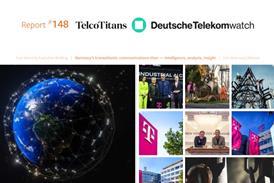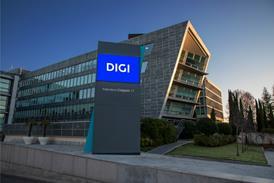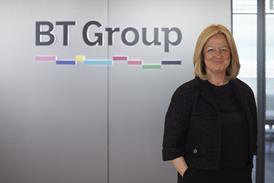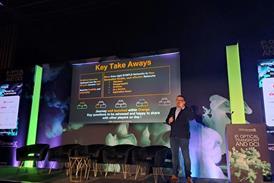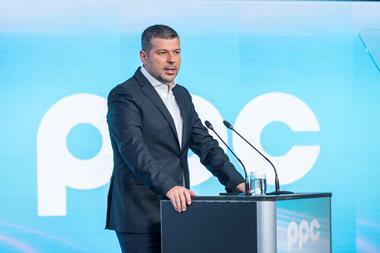- 10Pearls co-founder Zeeshan Aftab considers why the telecom industry’s widespread adoption of automation has often failed to deliver scalable growth, as it tends to digitise existing silos rather than connect them.
- Orchestration is the key to overcoming this limitation, providing a unifying layer that integrates systems, data, and processes to drive efficiency at scale.
- By implementing an orchestration-led strategy, operators can accelerate revenue capture through faster enterprise onboarding and protect billions in margin by preventing revenue leakage.
- Adopting orchestration is also a foundational step towards AI-readiness, as it creates the clean and connected data pipelines necessary for AI-native operating models.

The telecom industry is entering a critical new chapter, with Deloitte’s 2025 global telecommunications outlook seeing operators shifting into “growth mode” after years of cost-cutting — with enterprise AI, 6G, and B2B2X models topping the agenda.
As operators evolve toward AI-native networks, the rise of agentic AI systems capable of autonomous, goal-directed action is accelerating this transition, yet many transformation efforts remain mired in complexity — posing one of the biggest risks to the industry.
The reason is not a lack of automation. In fact, most telco operators have invested heavily in automating tasks across customer care, billing, and fulfilment. The problem is that automation alone has done little to unlock scale. By digitising silos rather than connecting them, automation often replicates the very bottlenecks it was meant to remove.
The real growth lever for operators is orchestration, a unifying layer that integrates systems, data, and processes end-to-end.
Automation speeds up, whereas orchestration scales
Operators don’t need more bots for billing or more self-service chat flows.

They need cohesive digital journeys where every step, from order capture to fulfilment to assurance, is orchestrated across CRM, BSS, inventory, and billing.
The business case is straightforward, with orchestration driving multiple business and operational outcomes that strengthen agility and efficiency while reinforcing customer relations.
Orchestration powers faster revenue capture, accelerating enterprise onboarding timelines that once stretched over 500 days. This can be reduced to a fraction of that time through orchestrated order-to-cash flows. And real-time revenue orchestration also stops losses across multiple OpCos before they spread, ensuring leakage protection.
Crucially, clean and connected data pipelines are the foundation for AI-native operating models, predictive network management, and customer personalisation. Orchestration is the base of AI readiness, and it is what enables agentic AI to thrive. Autonomous systems demand more than just data access; they require orchestrated, contextual data environments where intelligent agents can assess, decide, and act autonomously across complex systems. While automation can deliver incremental efficiency, orchestration turns that efficiency into scalable growth.
Lessons from our experience
The shift from siloed automation to orchestration is not theoretical; it is already reshaping operator economics.
It’s also a natural next step as the telecom industry’s demands for accelerated digital transformation, and customer expectations for quicker resolutions, both increase.
Across two decades of helping telcos transform their digital infrastructures, we’ve seen first-hand how an emphasis on orchestration — not just automation — drives wider-reaching, longer-lasting impact. The wins are evident from start to finish, as proven when pursuing an orchestrated approach to order-to-cash transformation:
- A global operator facing enterprise onboarding delays of more than 500 days has embedded orchestration into its digital lifecycle management (DLM) systems. This has resulted in a 75% uplift in onboarding, an 80% drop in order fallout, and millions saved in billing operations.
- Another Tier-1 operator used orchestration to standardise revenue assurance and fraud controls across multiple OpCos at scale. This prevented $1.5bn in leakage and delivered a 140% year‑on‑year improvement in recovered versus recoverable losses. This is a clear case in point of how orchestration can drive revenue assurance at scale.
Modernisation via orchestrated AI also empowers telcos to tackle some of their greatest hurdles, once and for all.
Legacy systems remain telcos’ heaviest anchor in terms of digital transformation, skyrocketing modernisation costs, and adding extra legwork to revamp existing processes in tandem with transformation.
By embedding orchestration into our Revamp 10X AI framework, operators have slashed modernisation costs by 50%, accelerated project timelines by 60%, and driven down production issues by 70%. Just as importantly, the framework lays the foundation for deploying agentic AI, creating structured, responsive environments where autonomous agents can continuously optimise workflows, detect anomalies, and adapt in real time.
Why it matters now
Taking action now is critical, as operators are being pulled in three directions simultaneously.
They need to build new revenues in enterprise, IoT, and vertical solutions.
There’s also pressure to defend margins in consumer markets, where average revenue per user is flat.
Plus operators are gearing up for 6G and AI-native networks that demand higher agility, particularly with 2028 — the anticipated year of significant advances — looming.
Trying to meet all three demands with fragmented automation will not work. Without orchestration, operators will continue to waste investment on partial solutions, while competitors move faster to capture enterprise deals and launch AI-driven services.
Operators embracing orchestration will define the next “growth” chapter of telecoms. They can capture enterprise revenues faster, protect billions in margin, and move early on AI-native services. They will also be best positioned to deploy agentic AI, moving from reactive automation to proactive, autonomous intelligence that scales across the enterprise. Those that remain stuck in automation-only strategies risk being left behind, as costs mount and agility stalls.
Automation may make telcos more efficient, but orchestration makes them more competitive. In a growth-driven market, that distinction matters.
Founded in 2004, 10Pearls is a global AI-powered Business Solutions Partner.
Building on over two decades of digital engineering experience and a global workforce of over 1,300 team members across North America, Latin America, Europe, and Asia, 10Pearls supports some of the world’s leading enterprises in delivering future-ready solutions.
Recognised on the Inc. 5000 list of fastest growing private companies in America for seven years in a row and CRN’s Solution Provider 500 list, 10Pearls delivers a unified Business Process Management and Automation Solution. This enterprise-grade platform integrates and automates processes through an orchestration layer and intelligent agents.
With over two decades of experience working alongside leading telcos, including Vodafone, Ooredoo, and MTN, 10Pearls drives 20× faster development times, 50% cost reduction in IT, and measurable ROI at scale.
10Pearls is a proud partner of Tomorrow Street Scaleup X.



